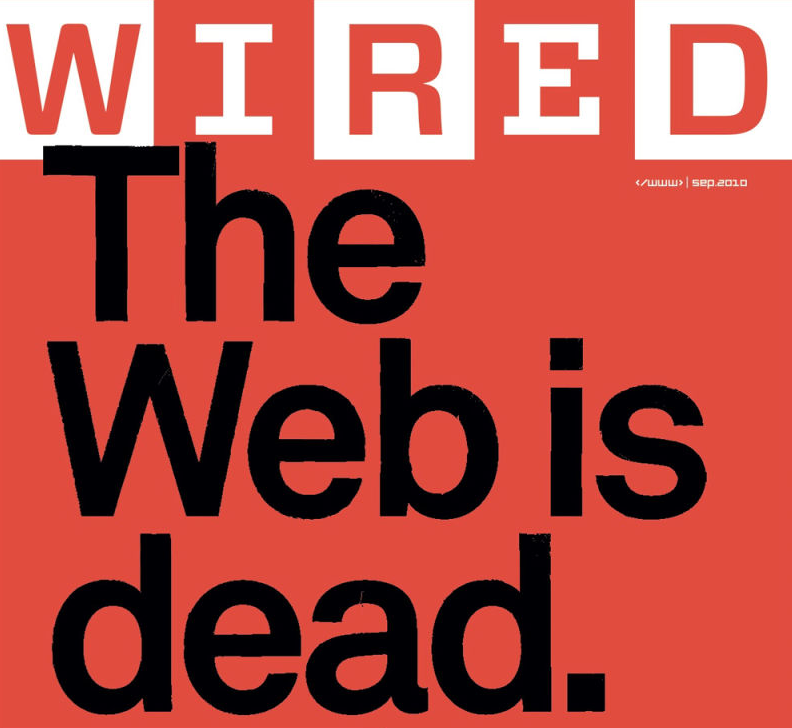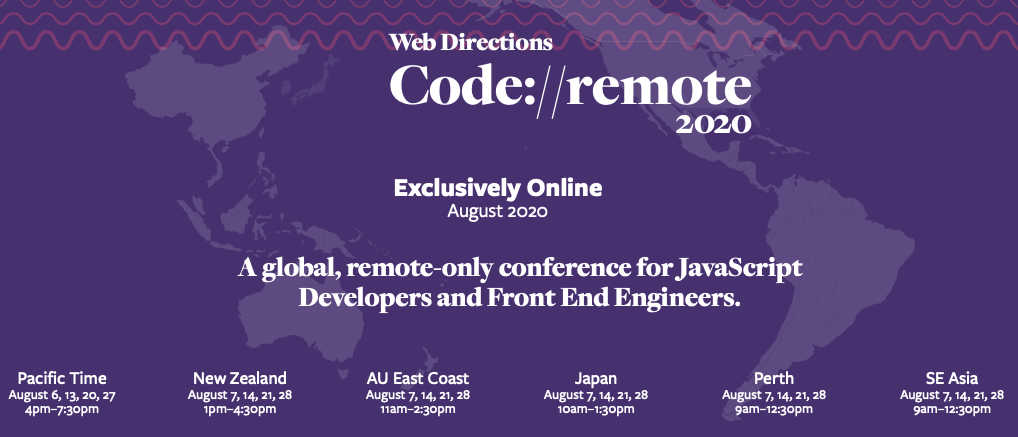It was 20 years ago today…
When I was younger the opening lines of the Beatle’s seminal Sgt. Pepper’s Lonely Hearts Club Band resonated with a sense of genuine antiquity, which no doubt the band intended–20 years seemed an aeon in the eyes of someone young. Especially the years 1947, from the early post war days of genuine privation for people in the UK, to 1967, and all the 1960s came to represent.
Just a few days ago it was 20 years since A List Apart published A Dao of Web Design, for which I will be forever grateful (in all the current COVID-19 related challenges I got the date wrong in my mind, thinking it was this week).
In the years since it was published it’s continued to be referenced and to resonate, at least with some, something for which I am also immensely grateful, not least at the start of Ethan Marcotte’s ground breaking essay in the same publication, Responsive Web Design which coined the term we all know so well, and outlined the basic framework for the foundations of how so many design and build for the web today–Ethan’s piece itself will be 10 years old next month.
So much in my life, and of the Web, and the World has changed in those 20 years–so can any relevance remain from that piece at the very start the 21st Century? From something written in the midst of the dotcom crash, years before smartphones and tablets, before most people had a computer at home, when laptops were rare, and wifi almost non existent. From a time when I still dialled up my ISP using a 56K modem (that’s 56Kbps, around 1/100th of the speed many folks take for granted around the world today) and used Netscape Navigator. A time before social media, before podcasts, online video. In short, from a time when the Web was almost completely different from the Web of today, and a mere third of its current age.
At the very heart of my piece was this idea, a quote from the Tao Te Ching (the central text of Daoism, hence the title)
Well established hierarchies are not easily uprooted;
Tao Te Ching; 38 Ritual
Closely held beliefs are not easily released;
So ritual enthralls generation after generation.
Now you might reasonably be wondering what this rather vague passage has to do with the Web. I followed with an analogy from more modern times–
If you’ve never watched early television programs, it’s instructive viewing. Television was at that time often referred to as “radio with pictures,” and that’s a pretty accurate description…
When a new medium borrows from an existing one, some of what it borrows makes sense, but much of the borrowing is thoughtless, “ritual,” and often constrains the new medium. Over time, the new medium develops its own conventions, throwing off existing conventions that don’t make sense.
A Dao of Web Design
At the time, the Web was still emerging from its origin in print design. After all, we still call these things pages, and their design and appearance is profoundly grounded in the traditions and practices of print design–fonts and typography, page layout.
Many of the debates around web design in the late 1990s that were central motivations for this piece, in particular the very common desire by designers at that time for control over how their designs were displayed, have through convention and the emergence of newer technologies like web fonts and more sophisticated CSS capabilities faded into the past.
But I think, or at least hope, that the ideas I elaborated all those years ago still have value when we think about the Web today.
The Web and its metaphors
The primary metaphor for the Web in 2000 was the printed page. In 2020 it’s the app. The rise of smartphones saw the rise of the app, which many felt would, or indeed had killed the Web. In 2010, just months after Marcotte’s piece, Wired published this highly influential cover story.

Talk of native apps and their inherent superiority as a user experience, as a developer experience, as a channel for distribution was ubiquitous. Somewhat curmudgeonly, I referred to this, 12 years ago, as a great leap backward, and a couple of years later, within days of Wired’s cover story, perhaps motivated by it, I wrote Help stop the spread of NIBS (Native is Better Syndrome).
I was pretty harsh in that piece
In a way, native apps are parasitic–consuming the resources of the web/internet, resources like HTTP, TCP/IP that would never be there to be built on, taking advantage of the network effect of hundreds of millions of users, who would not be there were it not for the web, all the while subverting the guiding principles of the web.
Help stop the spread of NIBS (Native is Better Syndrome
But at the heart of that piece too, like A Dao of Web Design before it was the idea that the Web is sui generis–its own thing. That it’s not an app platform, just as it’s not a mechanism for distributing printed pages online. It’s still something we are exploring, discovering the capabilities and essence of.
Perhaps Scott Jenson captured this most succinctly in Mobile Apps must Die.
Native apps are a remnant of the Jurassic period of computer history, a local maximum that is holding us back. The combination of a discovery service and just-in-time interaction is a powerful interaction model that native apps can’t begin to offer.
Mobile Apps must Die
Just as the metaphors from print design held the web back, while also providing a framework for exploring its potential in the 1990s and early 2000s the metaphor of the app both provides a framework, and a limitation in exploring what the Web might be today.
Progressive Web Apps embody this tension–the profound challenge of striking a balance between an app experience where we install and trust a service to access features and information on our devices that go to the heart our privacy and security, and a Web experience, where services live at a URL, require very little effort or cognitive overhead to install, which update seamlessly, and use only those resources of our devices and networks we need right now.
The PWA model has been a remarkable success, and at a time when users install increasingly fewer apps (the current self, or imposed, quarantining of so many around the world might have a short-term impact on that long term trend) an approach that is increasingly widely adopted.
But just as when we turn our mind to the cutting edge of Web design in 2000 we shudder a little at how primitive it all seems, I’m hopeful that’s how we’ll feel about the state of the Web in 2020 a decade or two from now. I have little idea of what that Web might look like, just as in 2000, we had little idea what the Web of today might have looked like.
There is one thing I do feel I got right all those years ago:
The web’s greatest strength, I believe, is often seen as a limitation, as a defect. It is the nature of the web to be flexible, and it should be our role as designers and developers to embrace this flexibility, and produce pages which, by being flexible, are accessible to all.
A Dao of Web Design
This largely has come to pass. A Web that reaches billions, across countless form factors, and hundreds of languages is unimaginable using the techniques and technologies of the late 1990s wedded in the metaphors of the page. It has been achieved in no small part by embracing flexibility.
So how should I finish this piece, a time capsule for 2040? In no small part the same way: The web’s greatest strength, I believe, is often seen as a limitation, as a defect. It is the nature of the web to be flexible.
The Web has allowed us to adapt to the rise of the smartphone and tablet, and to reach an audience unimagined and unimaginable in 2000, and I feel confident it will continue to allow us to adapt to the opportunities and challenges presented by emerging touchpoints and technologies, around voice and audible interfaces, around more “passive” interactions enabled by accelerometers and gyroscopes, heart rate monitors and other sensors.
Once again, now is the time for the medium of the web to outgrow its origins, and constraints, this time in the metaphor of the application. Not to abandon so much wisdom and experience we can learn from there, but to also, and ultimately, chart its own course.
While you’re here
We run conferences for the Web industry. We’re taking our popular, long running conference Code online in August, and if you develop for the Web we’d love you to attend. We’re completely rethinking what a conference is when it’s online only, and you can read more and sign up for notifications here.

Great reading, every weekend.
We round up the best writing about the web and send it your way each Friday.
